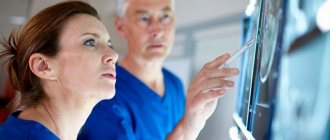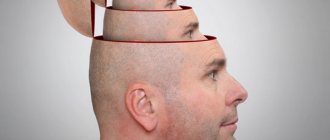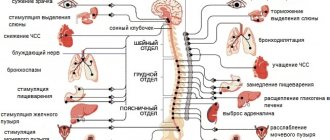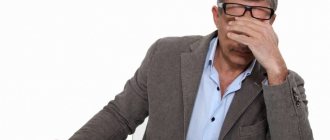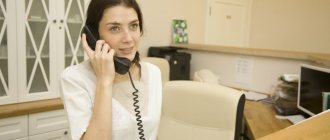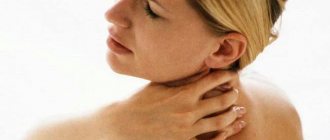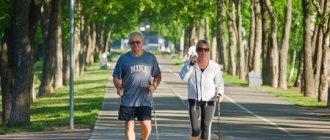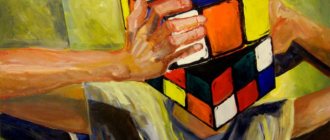A stroke is a sudden complication of a longer-term disease - a disturbance of blood flow to the brain due to venous insufficiency, vasculitis, hypertension or atherosclerosis. The outcome of a stroke will depend on the type and complexity of the disease, on the timeliness of medical care, and on which part of the brain was left without food and oxygen. Ischemic strokes occur more often - approximately 2/3 of all cases, with 15% of them ending in death, and 60% of patients have negative consequences.
In acute stroke, both ischemic and hemorrhagic, the patient may experience the following disorders:
- complete or partial paralysis (immobilization of the entire body or one side of it;
- paresis – numbness and loss of sensitivity of the skin;
- vestibular disorders in the form of loss of balance, poor coordination;
- disturbances in the swallowing process;
- speech disorders;
- hearing loss;
- disruption of the bladder and intestines as a result of pelvic paralysis;
- psycho-emotional disorders;
- decrease in intellectual abilities.
Ischemic stroke
Treatment of the consequences of ischemic stroke can be divided into several areas:
- Restoration of movement (sessions with a physical therapist, aquatherapy, exercises on simulators, use of modern techniques: Bobath therapy, Exarta, PNF method);
- Returning independence in everyday life (sessions with an ergotherapist in a specially equipped training apartment);
- Restoration of speech and swallowing;
- Drawing up a menu with the recommendations of the attending physician;
- Blood pressure control and drug therapy;
- Hygiene procedures (including ostomy care and ostomy removal);
- Symptomatic treatment (prevention or treatment of bedsores, pain relief, etc.);
- Restoring control of the pelvic organs;
- Treatment of depression, help from a psychologist.
The rehabilitation program is carried out in three stages.
The first stage begins in the first days after an ischemic stroke. The possibilities for active rehabilitation are limited, since the patient is in bed and inactive. The patient is turned over, massaged, and breathing exercises are performed.
It is important to communicate with the patient, even if his own speech is impaired or he cannot respond. Speech perception affects the functioning of functional areas of the brain and has a positive effect on the emotional and physiological state of a person.
The second stage lasts up to several months after the stroke. It can take place either directly in a hospital or in a specialized rehabilitation center. During this period, massage, therapeutic exercises, and physiotherapy are prescribed. Specialists work on speech and cognitive functions (memory, thinking, imagination). This stage can last up to six months: it all depends on the severity of the stroke.
In the late, third, rehabilitation period, active methods are used to restore functions and skills. Fine motor skills and self-care skills are restored. It is also important to develop the patient’s commitment to rehabilitation measures and a positive attitude.
In some cases, one or two courses of rehabilitation are sufficient (the patient is discharged with detailed recommendations and a set of exercises to be performed at home).
deals with treatment after ischemic cerebral stroke. Each specialist conducts an individual examination of the patient and sets time-bound and achievable goals. Team members interact and exchange information to ensure that rehabilitation is effective.
Signs and symptoms of stroke
Symptoms of a stroke are usually quite obvious, however, in some rare cases, a stroke can occur without symptoms. Symptoms may also appear and disappear within two days. At the very beginning of a stroke, the symptoms are the most severe, and if treatment is not started on time, the first symptoms will turn into irreversible changes in the brain.
The main symptom is a very severe headache. It is characterized by suddenness, is more pronounced when lying down, and intensifies when changing body position or coughing. Symptoms:
- drowsiness,
- loss of consciousness,
- decreased wakefulness,
- hearing impairment,
- taste,
- vision,
- tactile sensitivity,
- confusion of thoughts,
- difficulty swallowing,
- memory loss.
A stroke may be characterized by:
- violation of control over the physiological processes of the body,
- loss of balance,
- inability to speak, read and write,
- lack of coordination
- understanding someone else's speech,
- severe muscle weakness or numbness in an arm, leg, or face (usually on one side of the body).
Symptoms in women
Stroke occurs in women at any age.
Often the symptoms of a stroke in a woman are atypical, so women often confuse stroke with other diseases. On the eve of a stroke, a woman may experience:
- attacks of sharp or dull pain in the chest,
- blood pressure surges,
- high anxiety,
- redness of the face and bulging veins on the temples,
- heart rate up to 120 beats/min.,
- stomach ache,
- prostration,
- weakness in arms and legs.
Also, cerebral circulation disorders in women may be indicated by:
- tremor of the limbs,
- the appearance of awkward unnatural movements,
- loss of sensation in legs and arms,
- speech function disorder,
- blurred vision,
- lack of coordination
- transient amnesia,
- loss of balance.
Most often, women develop hemorrhagic stroke due to high blood pressure. This is facilitated by changes in hormonal levels, increased sensitivity to stress, and changes in blood clotting due to oral contraceptives.
Symptoms in men
For men, at the first signs of a stroke, the manifestation of motor activity disorders is more typical:
- weakness in arms and legs,
- disorientation in space,
- impaired coordination of movements,
- unsteady gait.
Common symptoms of stroke in men:
- severe headaches for which pain relief with pills does not help,
- vomit,
- high salivation,
- difficulty swallowing,
- decreased speech function,
- double vision,
- fear of light and sounds,
- prostration,
- drowsiness,
- weakness,
- convulsions.
Focal symptoms occur after general cerebral symptoms on the second day of stroke:
- numbness of the limbs,
- decreased skin sensitivity,
- memory loss,
- drooping eyelids.
Depending on the location of the damage to the cerebral arteries, symptoms of a stroke appear in a man:
- in the cerebellum - severe nausea and vomiting, pain in the back of the head. The patient cannot stand;
- in the brain stem - sudden loss of consciousness, paralysis, coma;
- in the ventricles - fainting;
- in the parietal lobe – tactile disturbances and spatial disorientation;
- in the temporal lobe – speech disorientation and hallucinations;
- in the frontal lobe - depression, aggressive behavior, seizures.
Consequences of a stroke
After a stroke, there are consequences that last for quite a long time.
- Movement disorders - manifested by paresis and paralysis. In order for impaired motor functions to be restored, at least 6 months must pass. Restoring more complex professional and everyday skills takes longer. Rehabilitation includes kinesitherapy (physical therapy, walking training), massage, electrical stimulation of the neuromuscular system, biofeedback with feedback.
- Sensory disorders are often accompanied by movement disorders. In order to restore motor disorders, it is necessary to eliminate changes in the muscle-joint sense, which significantly interfere with the performance of certain purposeful actions. This makes it difficult to restore walking and everyday skills, and also makes it impossible to perform finely directed actions. To correct sensitivity disorders, special exercise therapy courses and biofeedback with feedback are used.
- Language disorders such as aphasia and dysarthria can occur in up to 30% of stroke patients. The understanding of speech and one’s own speech are impaired, the patient does not remember the names of some objects or actions, does not understand and cannot reproduce speech, and in some cases he does not have his own speech at all. These disorders can often be accompanied by impairments in writing and reading. Sometimes articulation disorder occurs. To restore the speech apparatus, the patient needs the help of a speech therapist-aphasiologist and the use of nootropic drugs.
- Changes in muscle tone occur in a spastic type or in the form of hypotonicity. Muscle spasm aggravates movement disorders. In order to eliminate them, muscle relaxants are prescribed and physical techniques are used (acupuncture, special massage, passive gymnastics, paraffin therapy, ozokerite applications and cryotherapy). In case of muscle hypotension, activating massage, electrical stimulation are performed, and patients are injected with proserin subcutaneously.
- Central pain syndrome is observed in 3% of patients. Most often, thalamic syndrome occurs, in which the lesion is located in the area of the visual thalamus. It develops several months after the stroke and tends to increase pain. The patient experiences intense burning pain in the face and body on the side opposite the stroke area. They intensify with touch, pressure and changes in weather conditions. Against the background of pain, patients’ mood changes for no reason, and astheno-depressive syndrome subsequently develops. Treatment is carried out with pharmaceuticals and electrical stimulation is performed.
- Trophic disorders - manifested by arthropathy, muscle atrophy, sore shoulder syndrome and pressure sores. Sore shoulder syndrome is more common. It is expressed by arthropathy of the shoulder joint. The head of the humerus falls out under the weight of the paralyzed arm. Patients are concerned about pain, which intensifies when moving the arm posteriorly or anteriorly and abducting it. The treatment program includes prescribing anabolic hormones to patients, performing vacuum massage, turbulent hydromassage, paraffin therapy, ozokerite treatment and kinesitherapy.
- Visual disturbances - appear when the visual analyzer, which is located in the occipital lobe of the brain, and the visual pathways are damaged. The left or right visual fields fall out when the lesion is localized in the cerebral hemispheres. When the lesion is located in the brainstem or hemispheres, patients develop gaze paralysis. Double vision is characteristic of damage to the upper parts of the brain stem.
- Bulbar consequences of a stroke are expressed by disturbances in swallowing and articulation of sounds. With pseudobulbar disorders, violent laughter or crying spontaneously appears, which the patient cannot suppress through volitional efforts. The treatment program includes electrical stimulation of the muscles of the larynx, soft palate and tongue, and performing exercises prescribed by the speech therapist. If the patient has difficulty swallowing, he is fed through a tube. Forced crying or laughter is eliminated by taking medications.
- Disorders of higher mental functions. After a stroke, memory may deteriorate, intelligence and concentration may decrease, emotional and volitional disorders may develop, and disorientation in space may occur. The consequences of a stroke are (in the absence of paresis) a violation of the performance of complex movements; patients have difficulty recognizing people, recognizing and comparing images. They are unable to perform purposeful motor acts. Such patients undergo long courses of treatment with nootropics and other neurotrophic drugs, and are prescribed psychotherapy and kinesiotherapy.
- Disorders of coordination and balance - occur with lesions of the cerebellum. They make it difficult to regain self-care and walking skills. In order to eliminate them, it is necessary to apply biological feedback techniques and special individual exercise therapy programs.
- Post-stroke epilepsy - develops in 2-6% of people who have had a stroke. Seizures are eliminated and prevented with the help of medications.
The consequences of a stroke are reduced if the patient is treated in a timely manner with modern methods of therapy. The skillful hands of doctors and nurses can perform small miracles. Call us for a free consultation: +7 (495) 023-10-24.
Motor disorders in stroke
In order for a motor act to take place, the nerve impulse must pass unhindered from the motor area of the cortex to the muscle. A disturbance in any part of the cortical-muscular pathway makes it impossible to carry out an impulse. The muscles cannot participate in the act of movement; they become paralyzed. With a complete lack of movement in the muscles, plegia develops; with incomplete loss of motor function, paresis develops.
- When the muscles of one half of the body are affected, they speak of hemiplegia (or hemiparesis)
- When both arms or legs are paralyzed, the designation “paraplegia” is used.
- In cases of paralysis of all limbs, the designation “tetraplegia” is acceptable.
Motor disorders in patients who have suffered a stroke are polymorphic. The most common motor dysfunctions identified are:
- Hemiparesis,
- Various ataxic disorders
- Extrapyramidal disorders (tremor, chorea and dystonia).
When the lesion is localized in the area where the posterior thigh of the internal capsule is located, hemiplegia develops. The farther the stroke site is from the hip, the less severe the motor impairment.
Most patients have a complex motor defect of varying nature and severity. It leads to postural disorders.
A postural defect can be primary, that is, develop as a result of the stroke itself, and secondary, occurring when connections that are involved in the motor circuits are disrupted. If the focus is located in the central gyri (white matter area), motor disturbances are present in the upper limb, more so in its distal part. With moderate severity of hemiparesis, in this case either a full range of motion or a slightly limited one can be observed. The patient may notice weakness or awkwardness of movements in the wrist joint.
Motor disorders are distributed completely differently when the focus is localized in the anterior cerebral artery basin. Movement disorders predominate in the proximal upper and distal lower extremities.
If the focus of the stroke is located in the brain stem, a clear distribution of motor disorders is not visible.
Quite often, in parallel with motor disorders after a stroke, an increase in the tone of certain muscle groups, pathological reflexes and abnormal combined movements are detected. After some time, the limb may become fixed in a certain position. Her mobility is limited and contractures develop. To avoid these consequences, rehabilitation should be started as soon as possible.
